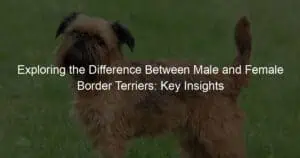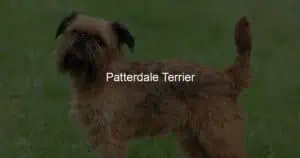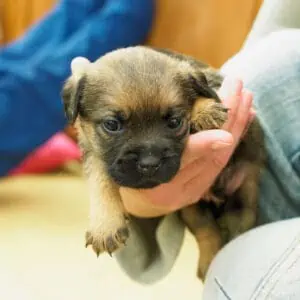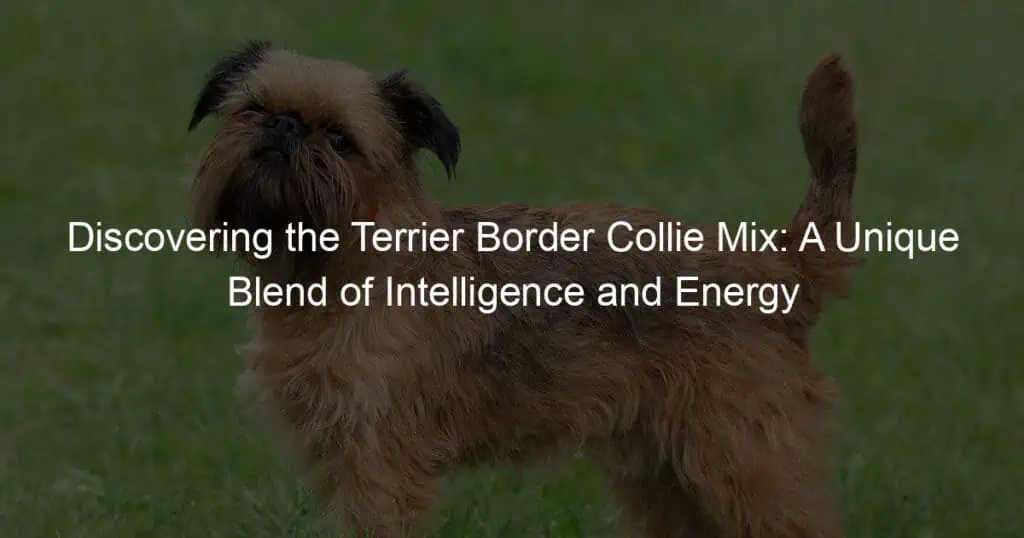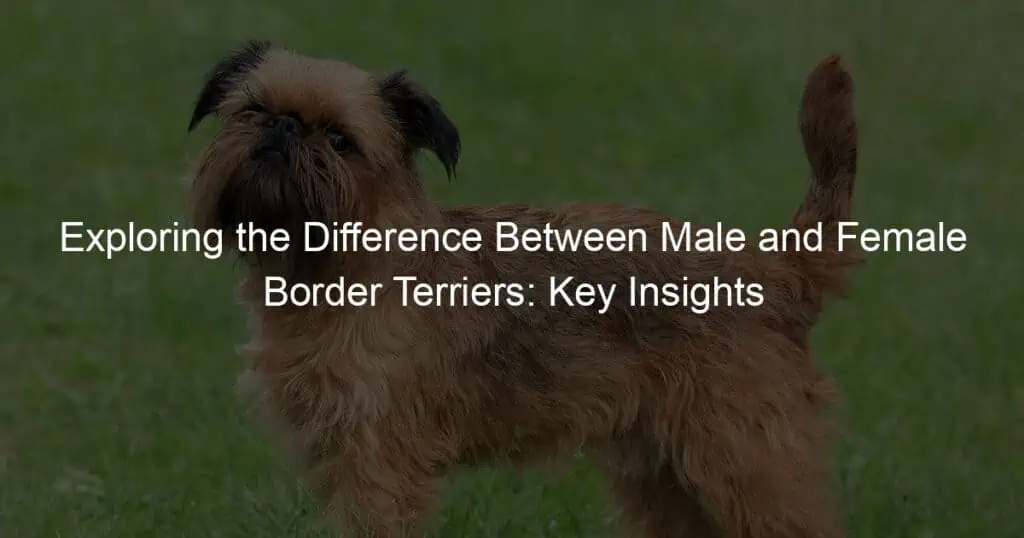Do you ever wonder where your Border Terrier’s distinctive coat color comes from? Does he take after his mom or dad genetically, or does it just look like luck of the draw? The answers may surprise you!
Genetics plays an important role in determining a Border Terrier’s coat color, and understanding its influence can provide valuable insight into how different factors come together to determine what makes this breed so beloved.
In this blog post, we’ll explore the science behind genetics and coat coloring in border terriers. Dive deep with us into the mysteries of phenotypes and genotypes as they relate to these adorable pups – read on to hear all about it!
What color fur does a Border Terrier have?
The Border Terrier is a small terrier breed, known for its loyalty and companionship. It has a unique “grizzle” colored fur that makes it instantly identifiable. The top coat is wiry and has a similar texture to the wiry wheaten terrier, with finer hair covering the face and legs in comparison to other parts of the body.
This distinguishing color is created by the blending of black, tan, and gray hairs creating a rather unique effect. It can often vary from dog to dog, creating deeper tones down the back or lighter ones around the neck or muzzle. All in all, it’s an intricate combination that is best appreciated up close!
What type of coats do Border Terriers have?
Border Terriers have a medium-harsh and weatherproof double coat, making them well-suited for the harsh winter climates of their native Scotland. Their outer coat is wiry and about 2 inches in length, providing protection from both water and wind. The softer inner coat (also known as an undercoat) gives these pups some additional insulation from colder temperatures.
The breed standard also requests that the undercoat should be “as dense as possible,” helping to ensure that these dogs maintain a comfortable level of warmth throughout the winter months. The distinctive coats of Border Terriers come in a wide variety of colors including red, wheaten, blue, and tan, all varied shades of grizzle, plus dark or light gray.
Additionally, there may be a small amount of white marking present on the chin, chest, and legs. No matter the color, it’s clear to see why the AKC describes this robust pup’s coat as “weather-resistant.”
How do the genes affect the color of a dog’s coat?
Dog coat color is determined by their genes, with some dogs boasting vibrant colors such as blue and red, while others boast more subtle colors like black or white. Every dog has two sort of sets of genes – one that carries the particular coat color information, as well as one that carries the patterns which create markings on the coat.
These genes work together to determine the final outcome in terms of a dog’s coloring. In addition to the traditional tri-color or blue-eyed dogs, gene mutations have resulted in some wild patterns like merle or brindle coats. While no two dogs look exactly alike due to their unique mix of genetics, all canines come into this world determined by nature’s blueprint and ready to leave a lasting pawprint in our hearts!
What are the genetics of dog coats?
The coat of any given dog is determined by a complex interplay of genetics. Depending on the breed, there are a variety of genes responsible for the type and color of the coat. Various combinations of genes can determine whether or not a puppy might have curly hair or longer hair, spots or blocks, or even what color those markings might be.
With so many potential gene variations, it’s no wonder that canines come in such an array of shapes, sizes, and colors! Understanding the genetics behind these beautiful creatures can greatly enhance our appreciation for them and how truly unique each one is.
And though some traits such as length and texture may change depending on age, gender, or environment, the underlying genetic code will always remain.
What is the genetic basis of coat color variation?
While the primary genetic basis for coat color variation is beyond dispute, there are many other factors that contribute to the rich array of colors seen in animals with fur. Color patterns are created by differentially expressing a group of proteins known as melanins and the production of pigments known as carotenoids.
Different forms of melanin produce various shades from black to yellow and some animals can even vary their coat color according to the season. Furthermore, the distribution of these proteins and pigments over the skin is regulated by a number of genes which all have an influence on overall coat color.
A certain set of combinations between these biological elements can create a wide variety of hues and patterns, making it one of Nature’s most eye-catching displays.
It’s A Wrap
All in all, it is clear that genetics play an important role in determining the coat color of a Border Terrier. While much of the color variation in this breed has been established through selective breeding, many of these distinct and unique shades were likely brought about by genetic mutations. When it comes to getting a new Border Terrier pup, be aware that their coat color could take on any range from black and tan to grizzle-blue – both soft and wiry coats exist too!
It’s impossible to know what exact shade you will end up with but if you love Border Terriers then you’re sure to fall in love with whatever coat color and pattern your pup may have – it’s just part of their charm! In addition, responsible breeding practices should always be followed when selecting which parent dogs should produce future generations of these wonderful canine companions. With this proactive mindset, we can ensure our beloved Border Terriers will retain their adorable attributes for years to come!





